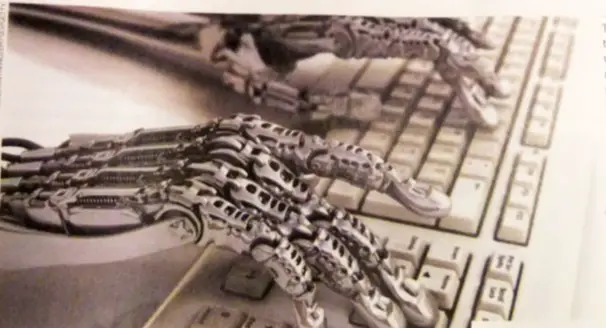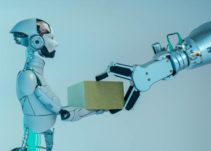For anybody who hasn’t been living under a rock these past few years, the words Artificial Intelligence (AI) and Machine Learning (ML) will probably ring a few bells. AI refers to the general ability of machines to do specific tasks in an ‘intelligent’ manner. This can include the ability to do anything from understanding human speech to playing games like Chess. Because technology has hit such an advanced state in recent years, there are so many possibilities for the future that it can be difficult to imagine what AI will shape up to be in the years to come and many investors are now becoming interested in investing in AI.

Machine Learning
Machine Learning is just one of many ways in which AI is used, though its current popularity cannot be understated. In Machine Learning, machines are essentially given large amounts of data. The machines then analyze and use the information to ‘teach’ themselves a multitude of different skills to accomplish different tasks by way of algorithms.
Read also: Benefits of Artificial Intelligence in Business
Deep Neural Networks
Deep neural networks are one way programmers can implement Machine Learning. While neural networks are nothing new in the programming world, deep neural networks have brought this formerly ostracized technology to the forefront of the world. The chip market has exploded in recent years thanks to the development of deep neural networks. This is because until graphics processing units (GPUs) could be leveraged to work with neural networks, the technology was simply too impractical and intensive to be used in a commercially viable manner.
In deep neural networks, machines take in as much data as possible, which is then analyzed in order to train AI systems to do certain tasks. One increasingly popular way in which deep learning networks are utilised is for quality control or assurance in manufacturing processes. Machine vision systems are capable of capturing detailed imaging of products, this footage is sent into a central system which leverages AI Inference to determine if the qualities match a model sample. Comparing against a model sample helps a business evaluate if each item on a production line is of a good standard. Deep neural network algorithms essentially come down to a question of probability. The more information it has, the more likely it is that ‘neurons’ in a system are able to make accurate statements, decisions or predictions regarding whatever it is that they are being made to analyze. By being exposed and re-exposed to information, the neurons’ accuracy continues to increase. Human beings can then interact with the networks in practical ways, whether it’s to translate text or to detect tumors in MRI scans.
Investing in AI
The chip market has been traditionally dominated by companies such as Intel, famous for its role in the advance of the PC. Such companies have the history, the infrastructure, the operations and the leverage to make themselves big players in the AI market. Indeed, Intel recently acquired a start-up called Nervana, responsible for an AI processor by the same name, one of the first chips specifically designed for the AI market.

Despite Intel’s advantages, it should be noted that they are not the only player in the game. Currently, nVidia holds a dominant position in the chip market, but there is no telling which way companies including Google, Facebook, Microsoft and Amazon are going to sway when it comes to the future of AI. In fact, Google has even gone so far as to building their own chip, known as the Tensor Processing Unit (TPU). IBM too is working on building its own processor, though it should be noted that Google’s TPU isn’t designed for commercial purposes, while IBM still hasn’t brought their chip to market.
If large companies are investing precious talent and resources on AI and processing units, it’s because the GPUs that are currently used to train AI systems are far from ideal – the GPUs that currently make deep neural networks possible were not actually designed with AI in mind. As such, the world has only just begun to see the possibilities of deep neural networks and AI. With the advent of chips designed specifically for AI systems, who knows how far this technology can be pushed.
With everybody from UBER to Microsoft investing in AI and deep learning, the fate of the chip market will depend on which way these companies sway. The big tech companies have so much purchasing power and use up so much hardware on everything from experimenting to selling products that whichever decisions they make regarding processors are sure to send shock waves throughout the chip market. Smaller companies also have options, like outsourcing their deep learning by using deep learning cloud management with Spell.
The Future of Jobs and AI
As AI becomes more sophisticated and ubiquitous, the general public has expressed significant concerns about the future of the job market. It’s a topic that dominates the boardrooms of Silicon Valley as well. This is no surprise given that the media regularly reports on the success of experiments such as fleets of driverless trucks and UBERs.
There is no doubt that automation will have an impact on the number of jobs and the types of jobs available for human beings. Transport and logistics, office support, marketing and customer service and many manual labor positions will certainly be the first to feel the impacts of the rise of automation. However, it should be noted that historically, as technology has displaced old jobs, it has also made room for new ones; an increase in productivity due to mechanization has often led to a corresponding increase in demand for related products. Furthermore, some jobs will simply forever be better suited to human beings than to machines – specifically any career related to empathy, such as medicine.
It must also be noted that despite the rapidity of technological progress, many jobs will continue to require human oversight. For instance, a courier vehicle may be driverless, but a human being will be needed to complete an actual delivery. In the manufacturing industry, automation has in fact led to an increase in demand for highly skilled laborers with a certificate of completion, a college degree or a university degree in a variety of technical fields. Indeed, many schools offer online technology courses because of the growth of AI and its impact across various fields, from auto manufacturing to the baking industry. A robotics technician or an electromechanical technician will not find him or herself out of place in any number of industries in this day and age, and even into the future.
Read also: What is Cognitive Automation, Its Benefits and Applications
Conclusion
While it is tempting to fall prey to a century or more’s worth of fear-mongering in relation to the rise of technology, the new Age of Machines is an inevitable direction in which the world is headed, which is why it must be openly discussed inside and outside of boardrooms. Policy-makers, CEOs and even schoolchildren must have a place in this conversation if the power of AI is to be channeled in a positive, successful manner benefiting a broad swath of society rather than causing it to become polarized. Investing in AI means more than trying to squirrel out the latest information on Facebook’s chip interests – it also means thinking about and investing in a brighter future, a future in which human beings will continue to play a decision-making role and hold their fate in their own hands.
[Images via: Google Images / flickr, Gwydion M. Williams]



